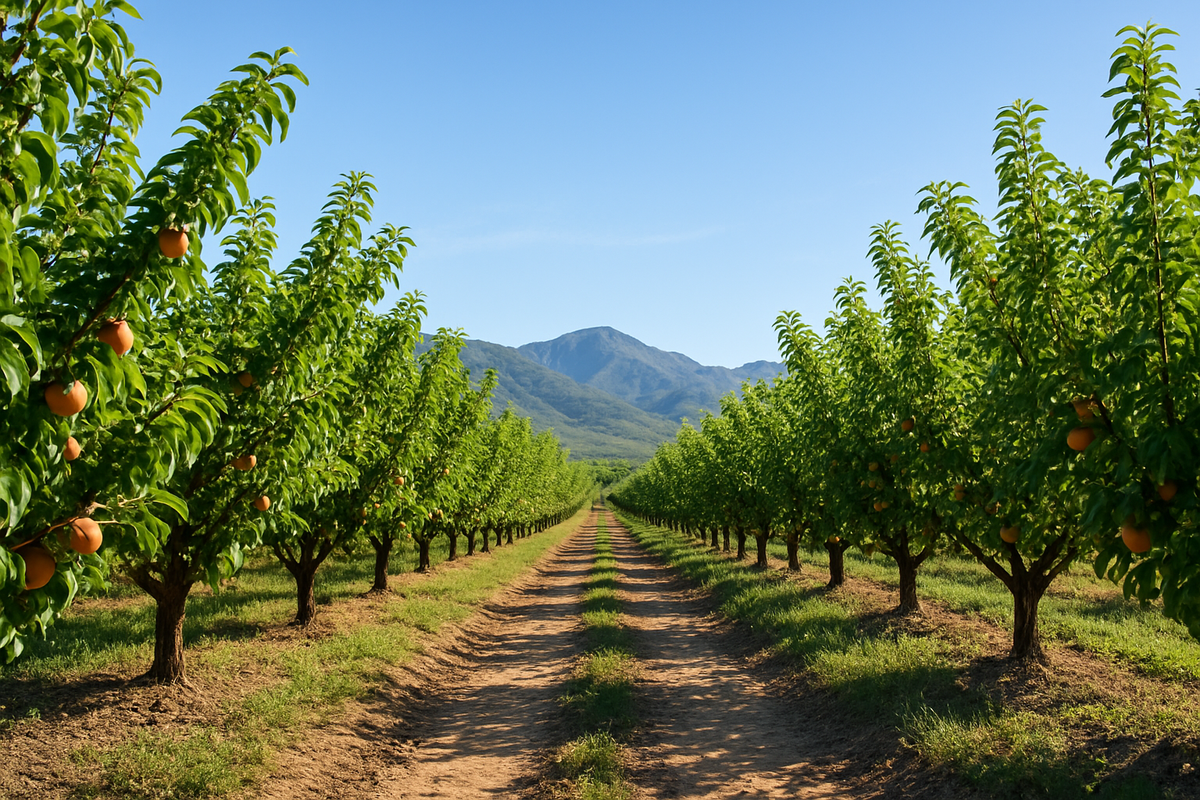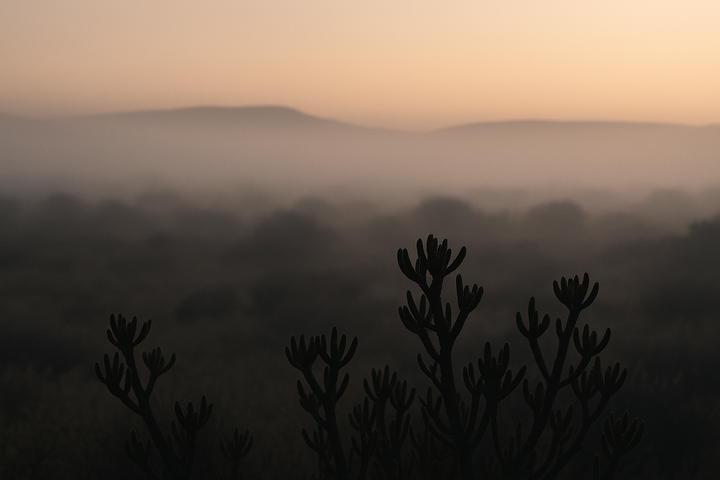How Klein Karoo orchardists use data to recover from the drought
Weather data might sound abstract, but on the ground it changes everything.

🔴 Have you read these articles yet?
👉 Eating your way across the Karoo in 48 hours
👉 The Karoo's book culture will outlive the algorithm
The Klein Karoo has always been a place of grit and beauty, its orchards tucked between rocky slopes and winding valleys.
In this seemingly serene bucolic idyl, a decade-long drought stripped away orchards and livelihoods, pushing growers to innovate. Now, fruit farmers in this unique South African region are rewriting the playbook.
The R62 growth initiative
The R62 Growth Initiative is a collaboration of local farmers and climate-tech partners that gives new life to fruit farming along Route 62.
With support from Hortgro, TerraClim and the Western Cape Department of Agriculture, the network of 21 weather stations now captures hyper-local data across the region. Instead of relying on general forecasts, farmers can see the temperature, humidity and rainfall specific to their own valleys.
Every station sits carefully in the sun, free from tree shadows or building interference, tracking cold units and wind speeds with remarkable precision.
The result is a picture of dozens of microclimates, sometimes just a few kilometres apart, that dictate which cultivars thrive and which fail.

The cost of drought
Between 2015 and 2023, the Klein Karoo endured one of its harshest dry spells on record. A survey by Hortgro showed that more than 940 hectares of fruit orchards were uprooted and nearly 300 hectares died entirely - a loss exceeding R69 million.
The slow replanting rate and mounting costs left production 20 percent below the regional average, costing another R119 million in value and R30 million in lost wages.
For a region where fruit farming drives the rural economy, the damage cut deep. The orchards support thousands of seasonal and permanent workers while sustaining agri-processing, retail and tourism.
When yields fall, everything from farm stalls to guesthouses feels the pinch. Amid these pressures the data-driven approach has begun to stabilise the sector.
Turning data into decisions
Weather data might sound abstract, but on the ground it changes everything. Farmers use it to calculate chill units, which are the cold hours that fruit trees need to flower properly.
When those numbers drop, growers know to switch cultivars or adjust irrigation cycles. Some use it to plan harvesting days around heatwaves, reducing fruit drop and water stress.
The R62 Growth Initiative also provides a fire-risk index based on temperature, wind and humidity. In an area where a spark can travel through dry veld in minutes this is an insight which can save both crops and lives.
Innovation rooted in collaboration
The project’s success relies on its collaborative framework. Farmers share their weather data freely, creating a regional map that benefits everyone.
This spirit of collaboration carries into broader water-use research in the fruit-growing sector. For example, the Water Research Commission (WRC) has published comprehensive studies on the water use and productivity of fruit tree orchards in South Africa.
These reports document how measurements of tree transpiration, evaporation and soil moisture can shape more efficient irrigation scheduling.
While the work is not farm-specific to the Klein Karoo’s apricot orchards, the findings are highly relevant. The studies show that fruit-tree growers in semi-arid regions can use site-specific soil and tree-growth data to reduce over-irrigation and boost productivity per unit of water.
In short, the evidence suggests that by tracking micro-climate variables, soil moisture and tree responses growers may well produce more fruit using less water, which is a goal of growing importance across the Klein Karoo’s fruit-producing towns.
A new generation of orchardists
Younger growers are particularly drawn to these tools. Where their parents relied on intuition, they now scroll through real-time dashboards before deciding when to irrigate or spray.
The data strengthens experience rather than replacing it. Growers in the Klein Karoo are increasingly planting crops such as pomegranates and figs, which research identifies as well-suited to the region’s dry climate and erratic rainfall
The shift is as cultural as it is technical. Farming here demands interpretation, and while the orchards may be smaller than they once were, their productivity is climbing again.
Beyond the orchards
These changes ripple beyond the farms. Stable harvests mean steady jobs, fewer families leaving for cities and stronger rural schools and clinics.
As climate change tightens its grip, projects like the R62 Growth Initiative offer a blueprint for semi-arid regions worldwide. They show that adaptation doesn’t necessarily have to rely solely on high-tech machinery or massive capital but can be shaped by cooperation and local insight.
The Klein Karoo’s fruit farmers are proving that innovation can grow even in thin, dry soil, but the road remains steep. Capital for replanting is scarce, and weather extremes are becoming more frequent.
Still, optimism is taking root. With each station transmitting a pulse of data across the valleys, growers are rediscovering a region that once seemed lost to drought.
🔴 Have you read these articles yet? Each one is a quick read, and we think you’ll enjoy it.
👉 Traditions that add warmth to daily life
👉 Slow Sunday cooking never goes out of style





Comments ()